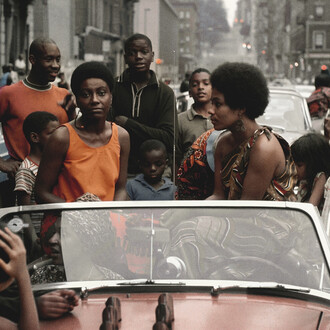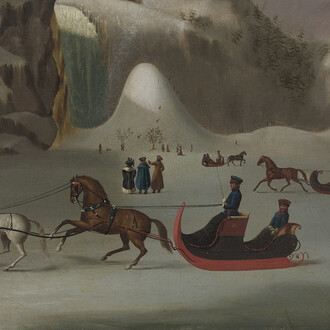Utagawa Hiroshige (1797—1858) was a master of the traditional Japanese Ukiyo—e, a genre of art showing the thriving life of the Japanese middle class in the Edo period. During the Edo period the Tōkaidō was Japan’s main highway. It linked the two capitals, Tokyo, then called Edo, and Kyoto. In view of the road’s importance, stages or stations were set up at strategic points where the traveller could find lodging, meals, and entertainment. Having travelled the Tōkaidō in 1831, Utagawa Hiroshige created a series of prints showing the fifty-three stages as well as the points of departure and arrival.
Woodcut printing was virtually the sole method of reproduction in Japan for nearly 1200 years. During the eighteenth century it became indeed a popular method of reproduction as it allowed the printing of a large number of graphics which could be sold at low prices. When Japan opened its doors to trade in the latter part of the nineteenth century, Japanese art, especially the print, spread throughout the world causing a sensation in artistic and literary circles in France and England. The revelation of Japan’s creativity breathed new freshness into Western art, and its influence continues to this day.
The Hiroshige prints form a complete set from the original set first published in 1834. They are of great interest, not only as a complete set, but also as impressions from the original blocks. The set is in exceptional condition and has a unity that indicates that they were assembled as a group at the time of production rather than being brought together piecemeal at a later date.










